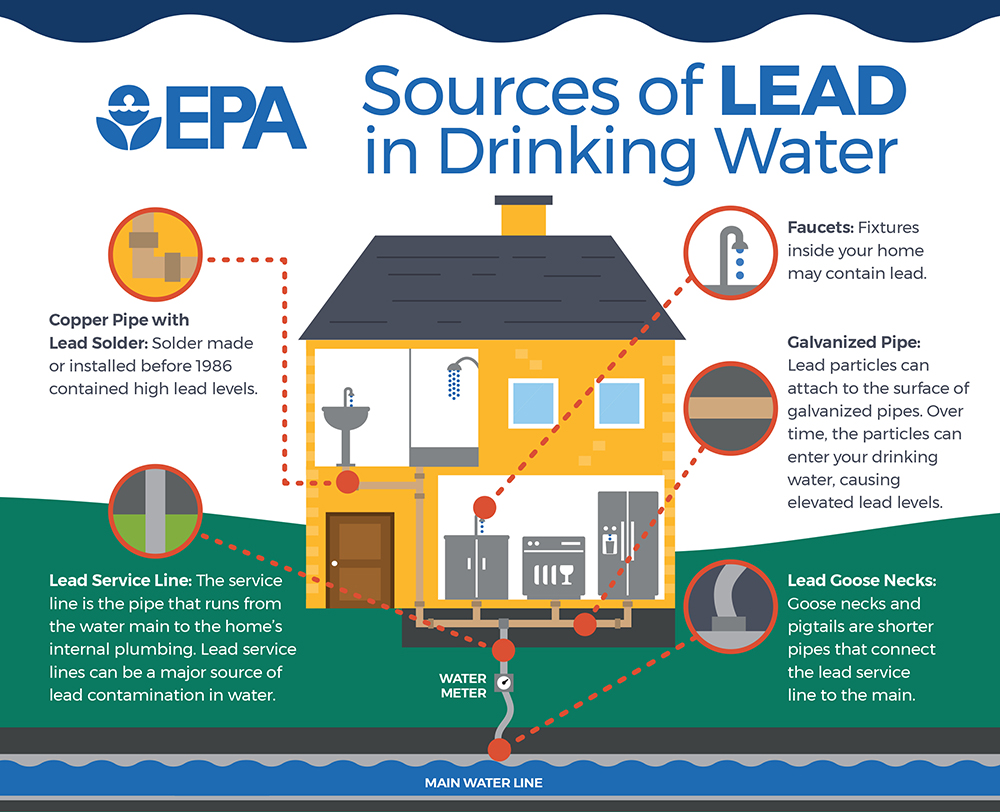Sources of Lead in Drinking Water
Lead is not usually found in the source or treatment of drinking water but in the water when it reaches the tap. This contamination is the result of lead leaching into the water from corrosion of fixtures and/or fittings in the service lines or plumbing. These fixtures or fittings include pipes, valves, faucets and pipe solder. Most often, lead-containing fixtures and fittings are usually found in structures built pre-1986. The amount of lead in water depends on types and amounts of minerals in the water, the amount of lead the water comes in contact with, how long the water stays in the pipes, the amount of water in the pipes, the water’s acidity and its temperature.

To address corrosion of lead and copper into drinking water, EPA issued the Lead and Copper Rule (LCR) under the authority of the SDWA. One requirement of the LCR is corrosion control treatment to prevent lead and copper from contaminating drinking water. Corrosion control treatment means utilities must make drinking water less corrosive to the materials it comes into contact with on its way to consumers' taps. Learn more about EPA's regulations to prevent lead in drinking water.
While Jackson Energy Authority is responsible for providing high-quality drinking water, we cannot control the variety of materials used in plumbing components. Jackson Energy Authority follows the Lead and Copper Rule under the authority of the Safe Water Drinking Act (SDWA) to address corrosion of lead and copper into drinking water. If you are concerned about lead in your water, you may wish to have your water tested.
More information about lead and copper in drinking water is available from the Safe Drinking Water Hotline 800-426-4791 or at the links below.
